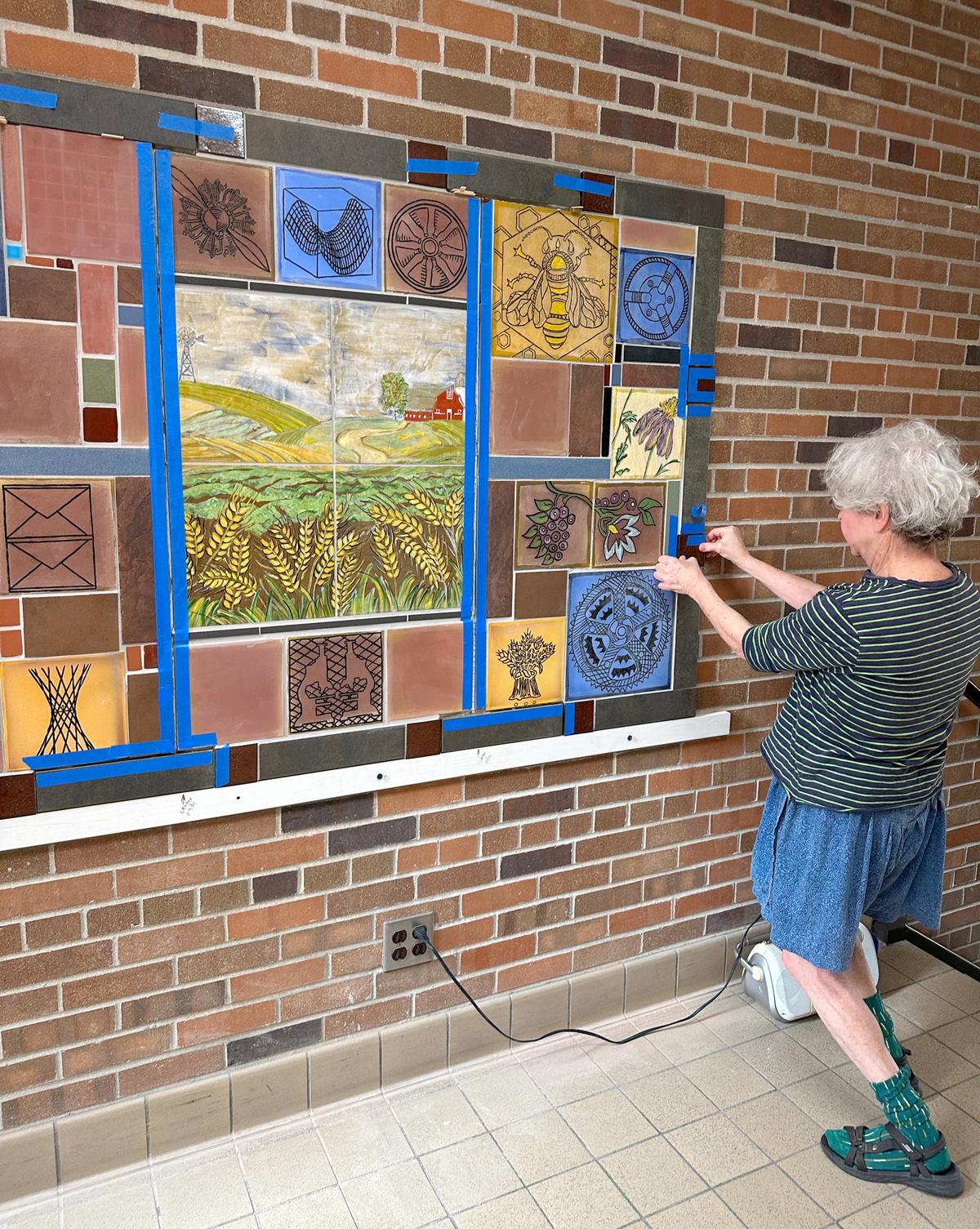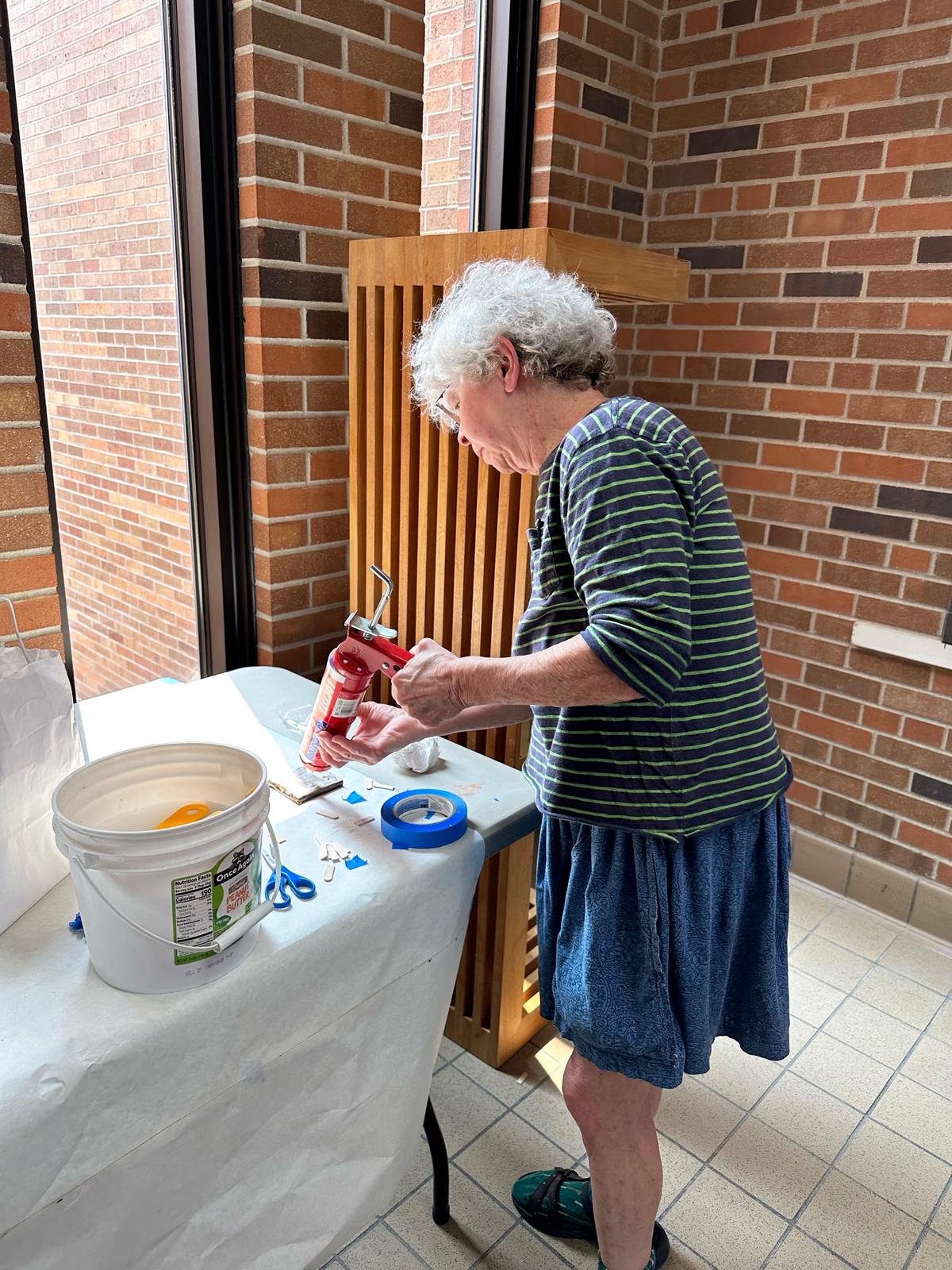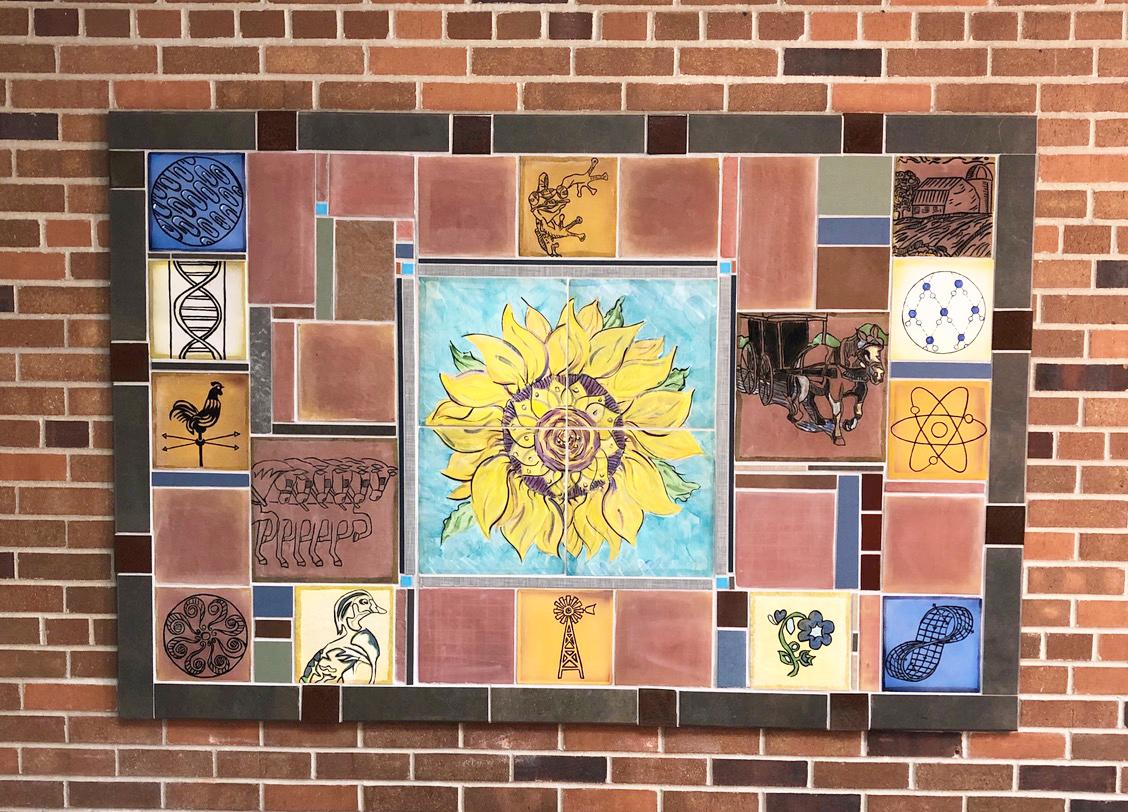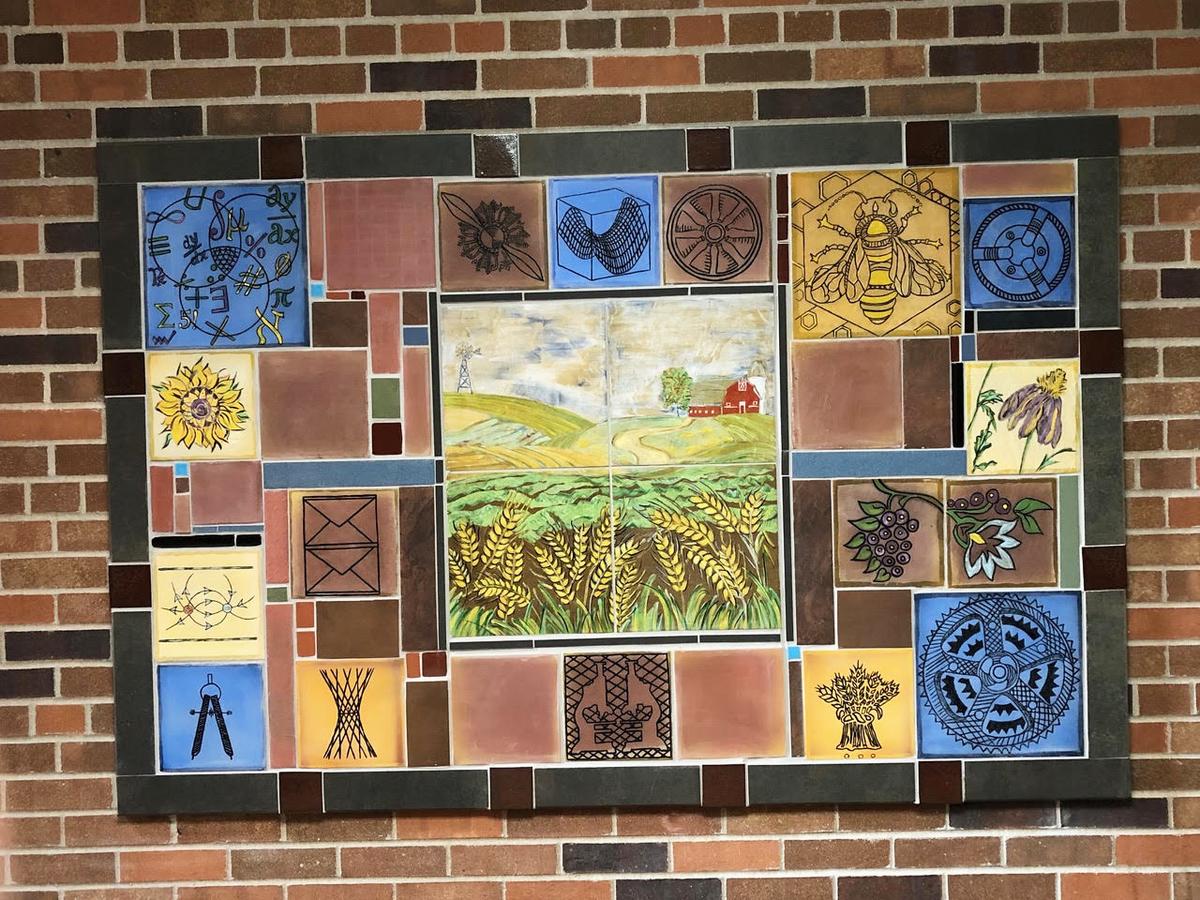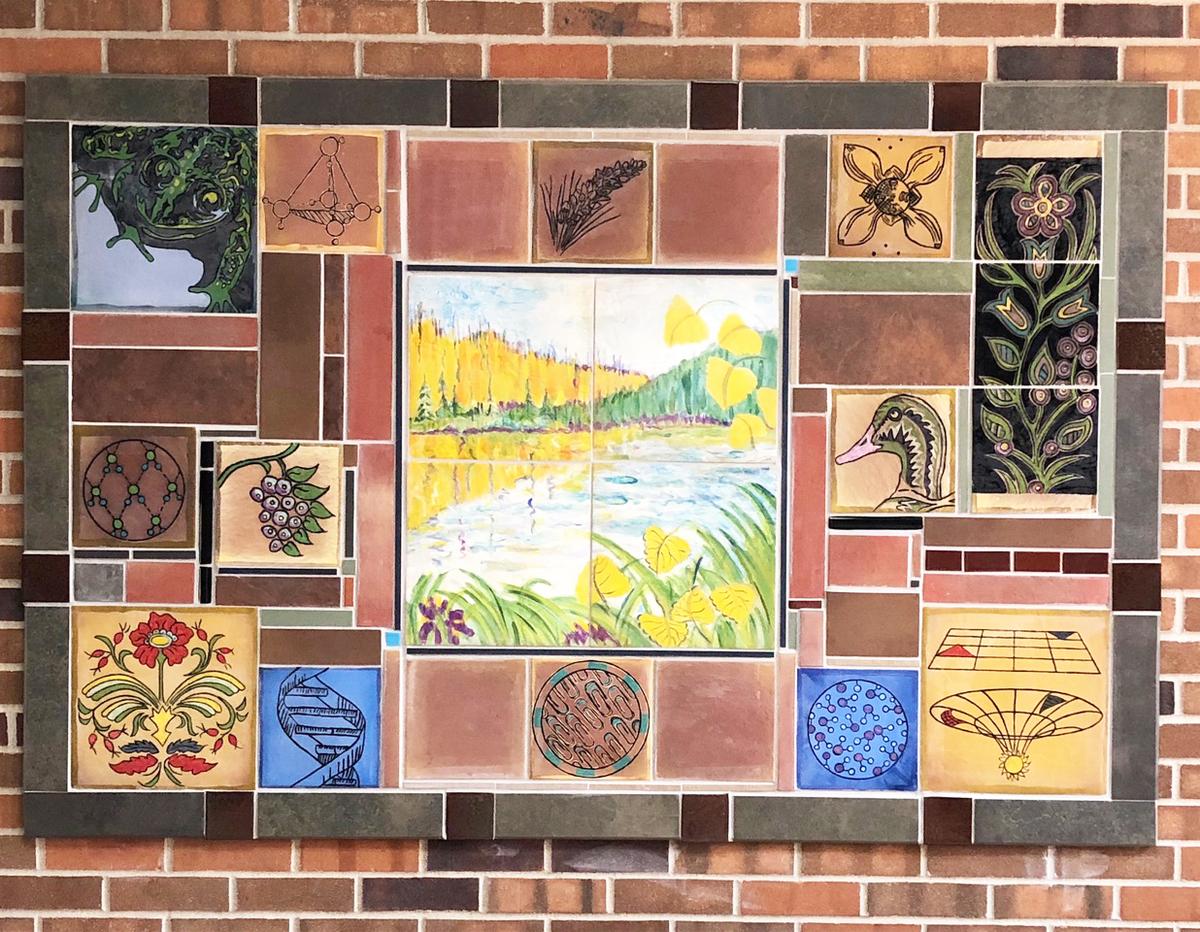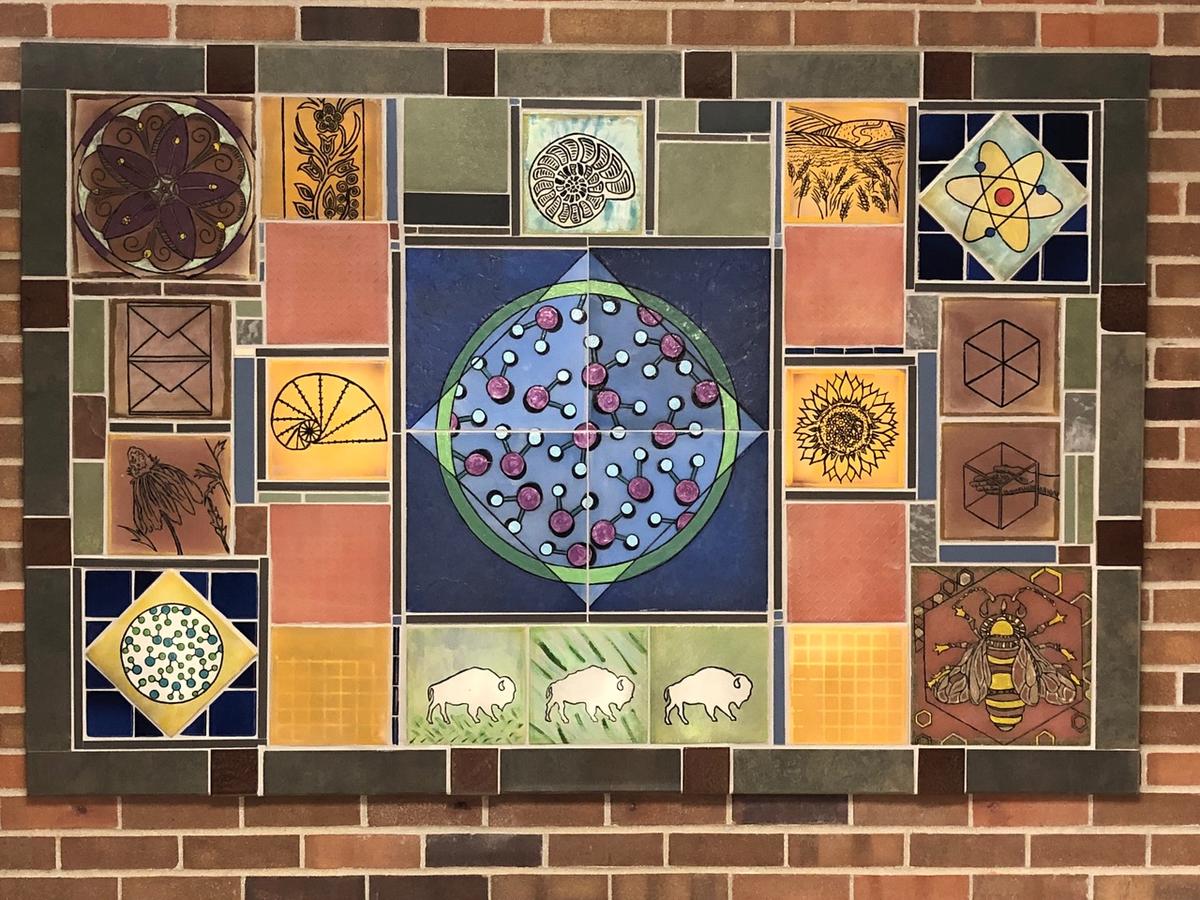
Through the visions of regional artist Susan Warner and faculty, staff, and art committee members from the University of Minnesota Crookston, tile art featuring agriculture-focused compositions have come to life on the walls of Dowell Hall. Warner says the projects took months of research, note-taking, and multiple conversations, then finally four central images emerged: Sunflower, Farm, River and Cottonwoods, and H20 molecule under a microscope.
The timeline of the Dowell Hall tile art project included a year of meetings and brainstorming, and another eight months for drawing, production, and installation.
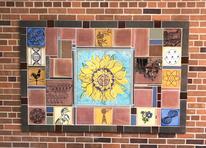
“The Sunflower (art) has agricultural, natural, spiritual, scientific, art-historical, and global significance,” Warner explained. “I began the project with the Sunflower because of its beauty, unique significance to the U of M Crookston, and the positive attributes the sunflower symbolizes around the world and throughout history.”
“The (campus art) committee wanted the concept of grace represented in the work, and the sunflower symbolizes peace, grace and spirituality all over the world, from Africa to Ukraine to Asia to Native Americans,” she added. “Art history depictions of the sunflower are diverse and global as well, painted by Monet, Van Gogh, and Diego Rivera to name just three artists from different parts of the world.”
Warner says the Farm art images were created to represent the importance of agriculture with a specific depiction of Crookston’s rich agricultural significance, plus the rich soil, geological past, and the grounding nature of the farm as a core element of the region. The River and Cottonwoods art were made to represent the importance and beauty of nature and the rivers in Crookston, with one river flowing north like the Red Lake River, and the H20 molecule under a microscope was depicted with molecules and atoms because of its importance to the rich agricultural Crookston region plus the rotating square representing the four directions (Native American concept) and the four seasons.
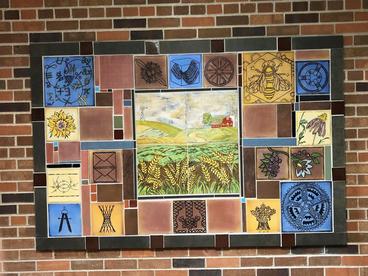
The process Warner used to create the Dowell Hall tile art projects were to set up each of the four compositions inside her studio so they could be worked on horizontally and simultaneously, and then to figure out the layout for the compositions she went for a mathematical aesthetic.
“The mathematical approach of Mondrian was an inspiration for composition,” she described. “We cut and sawed these geometric pieces surrounding the imagery, and glazed and fired many of these pieces. Math and science are two subjects woven throughout the work, reflecting classes taught in Dowell Hall.”
“The four central compositions (Sunflower, Farm, River, and H2O) took me two weeks each to complete to my satisfaction,” Warner added. “Hundreds of decisions were made regarding color, scale and composition.”
Each of the porcelain tiles had their own mix of colors and were airbrushed, fired (heated inside a kiln), under-glazed, fired again, glazed, and re-fired several times before they were sealed, set, and grouted. The tiles were detailed and edges cleaned up before they had screws attached prior to the test installation which was done at her studio before the final install on brick walls of Dowell Hall. There was a model made to do the test install, ledger boards created to support each composition during the install, foam packing for transportation, and a special custom built cart with wheels for moving the tile sections around on the Crookston campus.
The tile art in Dowell Hall was installed in June 2023. Since then, Warner has held studio sales of her pottery, tiles, sculptures, jewelry, and blown glass, and is looking forward to future projects.
Mississippi Mud Works is the name of Warner’s studio and she owns half a building in the Seward neighborhood of Minneapolis. Past projects of Warners include the Public Art Fireplace at Rondo Library in St. Paul, “Greetings from Minnesota” which is a 10 foot by 26 foot mosaic travel postcard-inspired mosaic permanent installation on the Minnesota State Fairgrounds, two lake-inspired mosaic public art pieces at the Minneapolis St. Paul Airport, a medicine wheel public art piece created with members of the Mdewakanton Sioux Community for a new cultural center, a kiosk and a 10 foot granite and mosaic couch in a Minneapolis park, and many more.
Approximately 20 years ago, Warner completed a tiled art entrance project for the U of M Crookston’s University Teaching and Outreach Center building right outside the now Charles H. Casey Equine Arena. That project had a Portico concept of handmade tile and metal with four 7-foot columns flanking the doorway topped by a 20-foot frieze of imagery including horses, acorns, star quilt, Native American history, aviation, sunflower, grain elevators, ox cart wheel, ammonite spiral, shock of wheat, gears, double helix, french curve, and coneflower. Each of those images symbolized or represented the land and region, people, history, mission, and programs of the campus.
Tile art in Dowell Hall
